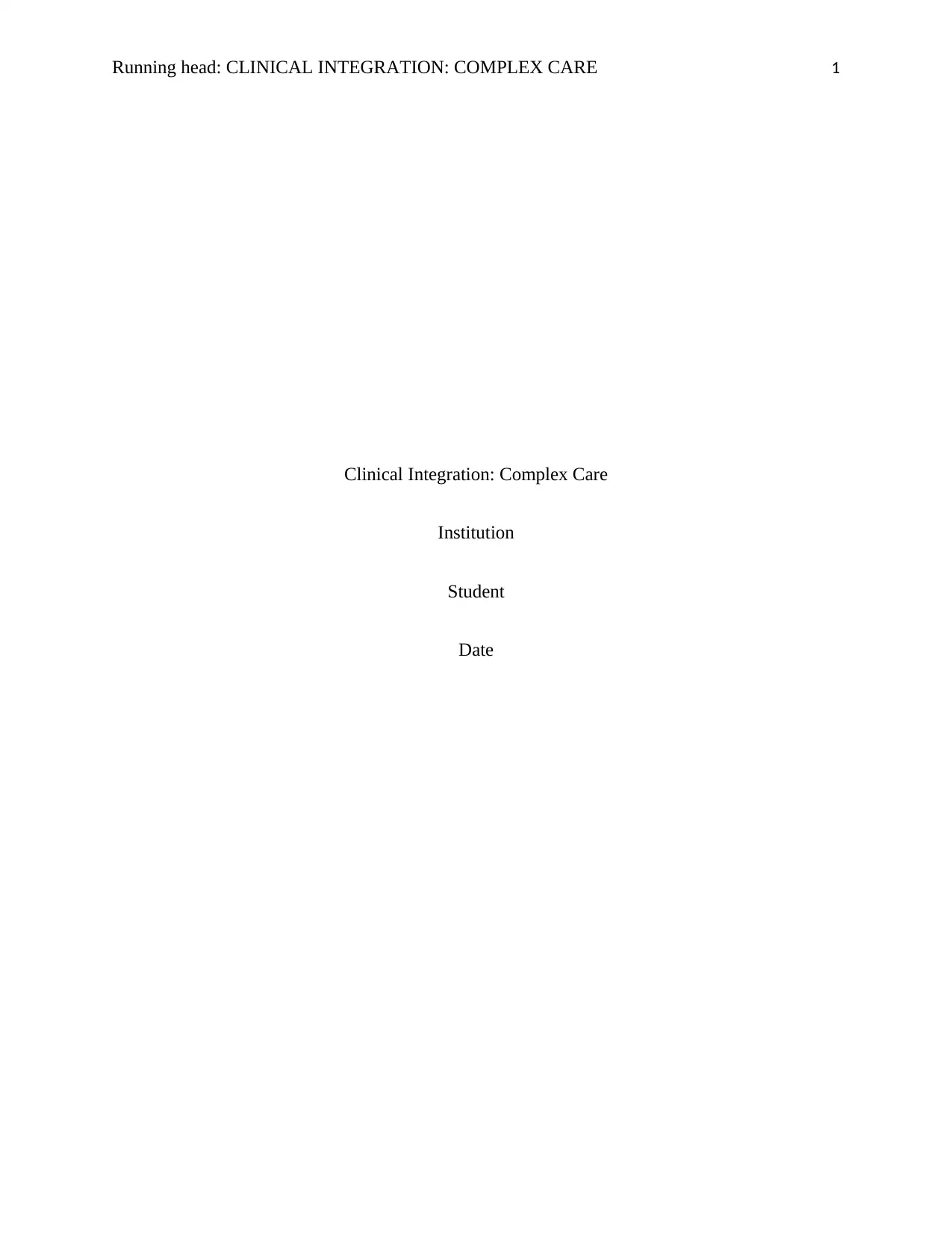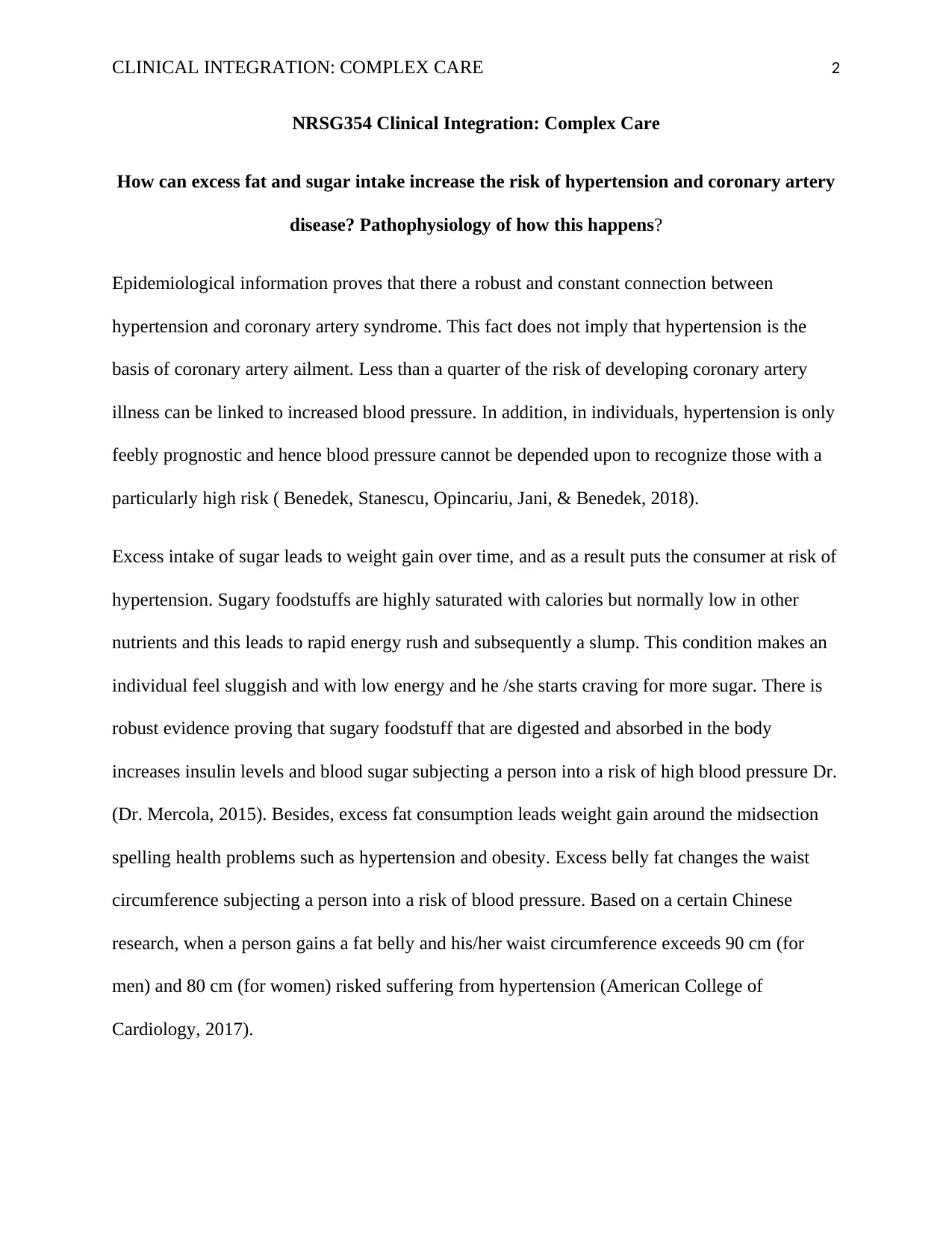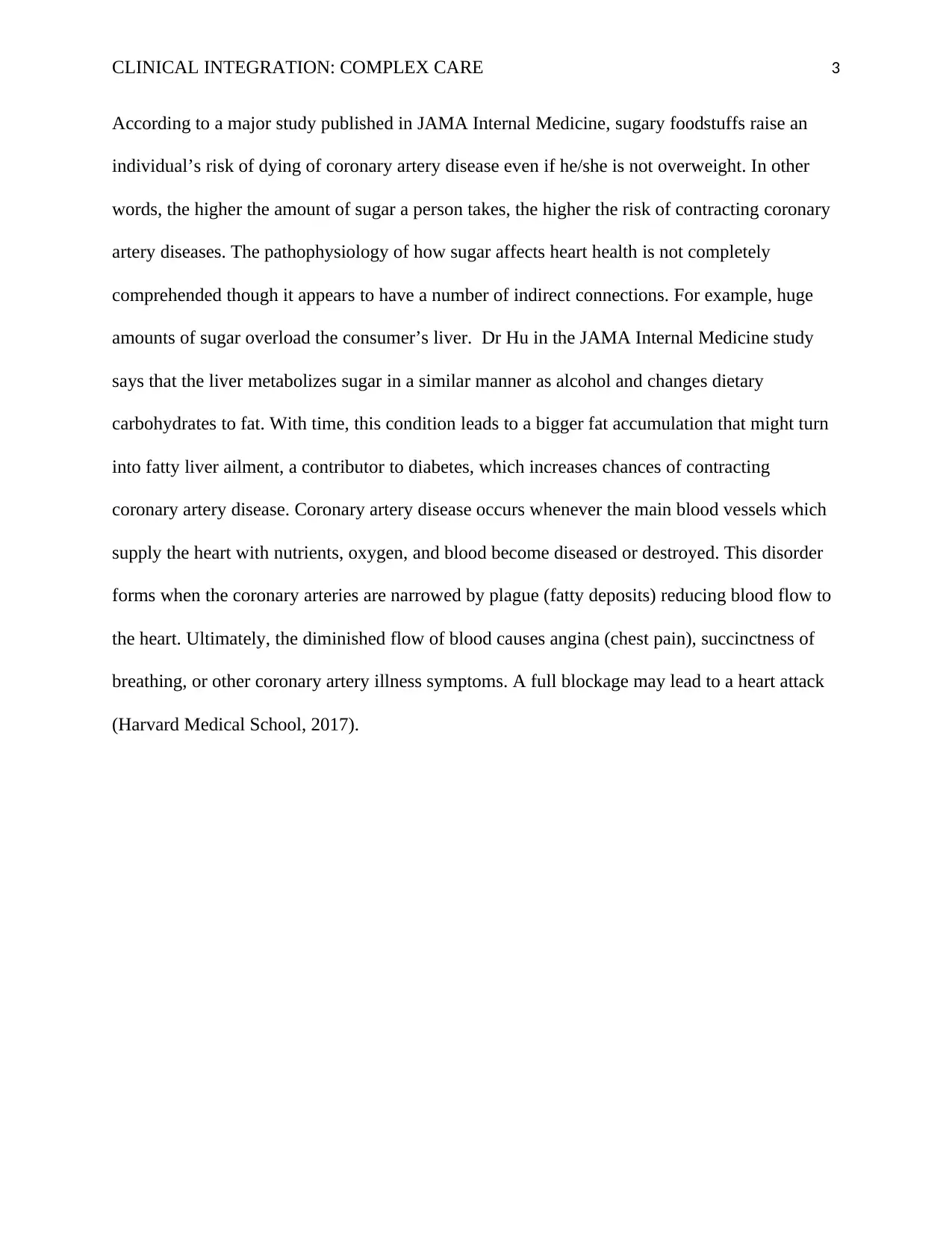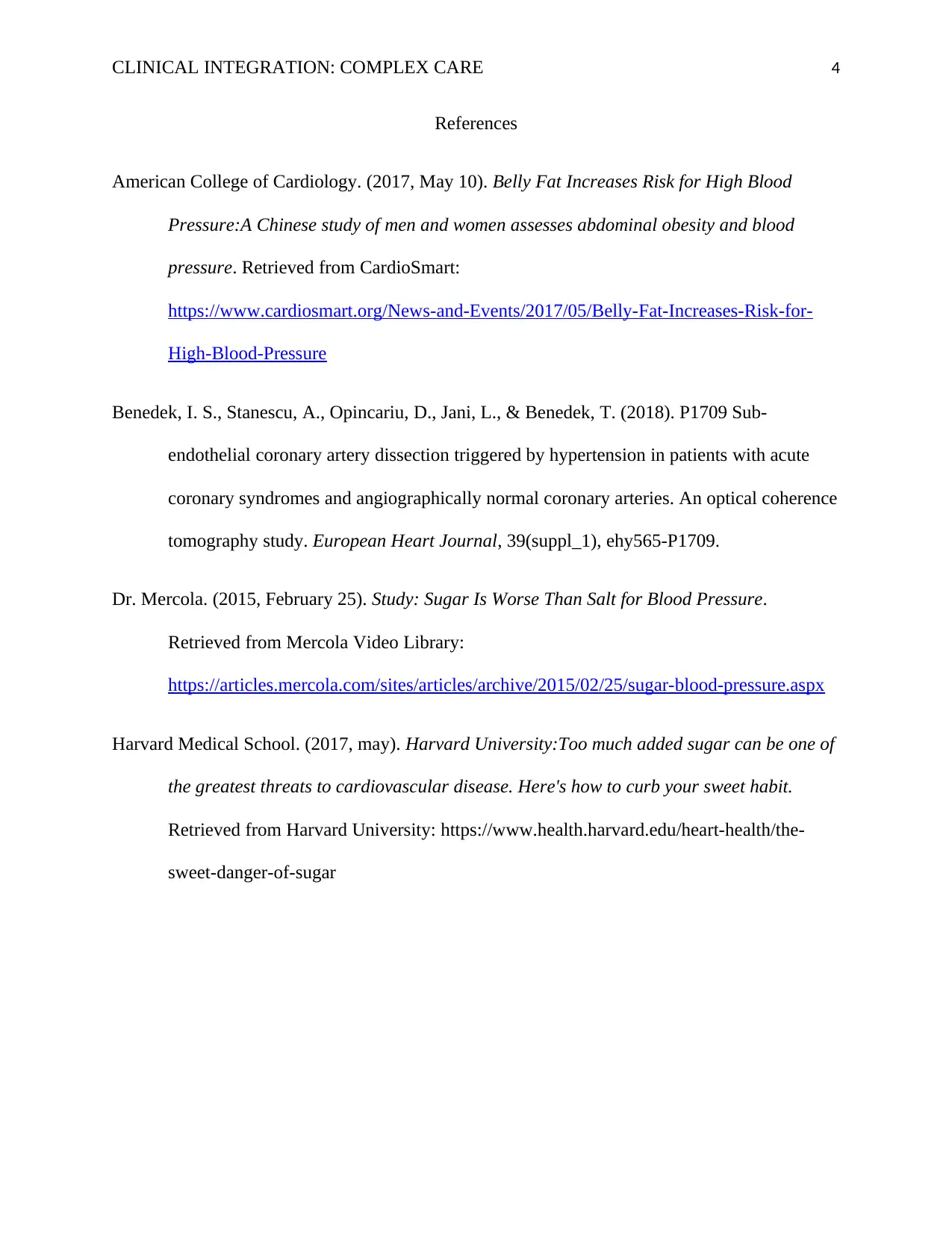NRSG354: Clinical Integration Complex Care Risk Factors Report
VerifiedAdded on 2022/11/23
|4
|759
|160
Report
AI Summary
This report, prepared for a Clinical Integration: Complex Care course (NRSG354), investigates the relationship between excessive sugar and fat intake and the increased risk of hypertension and coronary artery disease (CAD). It highlights the epidemiological connection between hypertension and CAD, while clarifying that hypertension is not the sole cause of CAD. The report explains how excess sugar leads to weight gain, insulin spikes, and increased blood pressure, and how excess fat, especially around the midsection, contributes to hypertension. It discusses the pathophysiology, including the liver's role in metabolizing sugar and the formation of fatty deposits in coronary arteries. The report references studies that underscore the significant risks associated with high sugar consumption, even in non-overweight individuals, and concludes with a brief overview of how CAD develops through the narrowing of coronary arteries due to plaque buildup.
1 out of 4











![[object Object]](/_next/static/media/star-bottom.7253800d.svg)